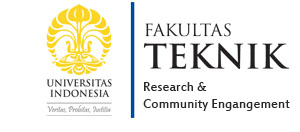| Abstract |
| |
|
Abstract: United States Environmental Agency defines pollution point sources and nonpoint
sources pollution as follows: "The source of contaminants (pollutants) can be either a specific
location (point source) or indeterminate / spread (non-point / diffuse source). Point source
pollutant sources eg car exhaust, smokestacks and industrial waste channel. Pollutants emanating
from the point source is local. The effects can be determined based on the spatial characteristics of
water quality. Volume of pollutants from a point source is usually relatively fixed. Sources of nonpoint
source pollution can be a point source in large numbers. For example, runoff from
agricultural areas containing pesticides and fertilizers, runoff from residential areas (domestic).
Meanwhile economic growth of Floating Net Cages (FNC) and land-based livelihoods in the basin
Maninjau increase the income of local people but also increase pollution in the lake. Without
proper watershed management, water quality will decline so would endanger the preservation of
lakes and human health. The aim of this study was to determine the optimum value of the landbase
and FNC economic growth based on threshold values of water quality index in the lake
Maninjau. The method used to determine land use predictions using the Land Change Modeler
(LCM). Patterns of land use change using the Land Change Modeler (LCM) revealed that in the
area of Lake Maninjau affect the level of Water Environment Quality Index, in which the highest
contribution of pollutants comes from FNC. Land use changes that occur in the area of Lake
Maninjau have affected significantly the economic growth and environmental degradation.
Changes of land use with a low value to a higher value has proven to improve productivity,
thereby increasing the economic value, such as a change from forest to mixed farms, orchards
mixture into a field, the field becomes settlement, as well as rice paddies turned into settlements.
On the other hand, the use of land in a watershed with a variety of both residential and agricultural
uses has donated contaminants which empties into the lake, causing the quality of the environment
in each estuary is varied and has a steadily declining trend. Spatial modeling showed
contamination levels touching bad condition in 2023. In that year the percentage of forest cover in
the area of Lake Maninjau is still dominant, amounting to 21.78%, 20.74% mixed gardens and
fields 7.77%, 3.94% rice, land up 2.07% and the open land of 0.001%, while the number of FNC
many as 29 146 units, and the total economic value of 3 trillion rupiah region but has experienced
a polluted condition. In 2023 the maninjau lake water conditions already in polluted conditions, so
that economic activity related to water cannot continue.
Keywords: Maninjau, Land Use, WQI, Economic growth, LCM |
|
| |
|
| |
|
| |
|
| |
|
| |
|
| |
|
| |
|
| |
|
|






